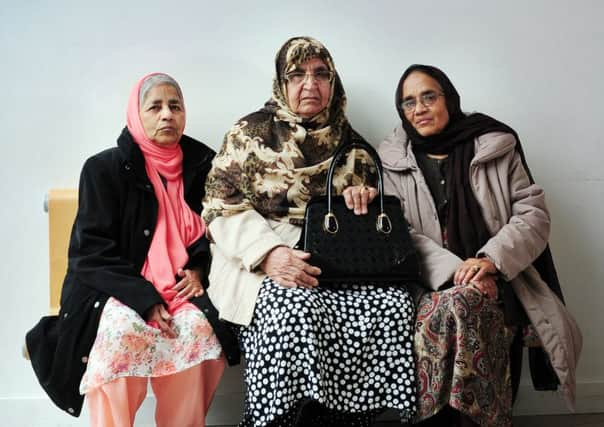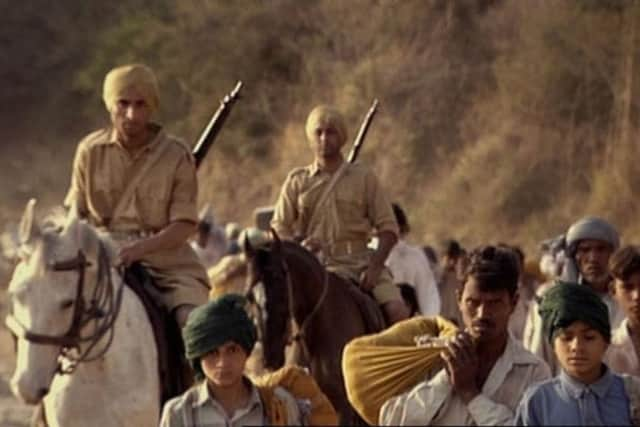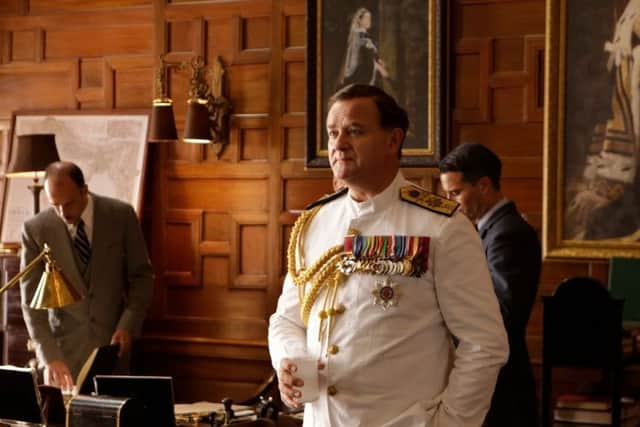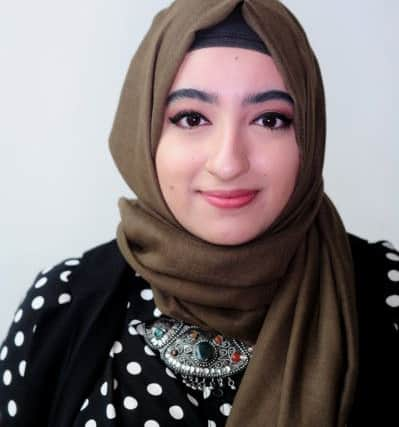Seventy years on, the untold stories from the Partition of India


Hmida Butt was just 12 years old in the summer of 1947 when the Partition of India was hurried through in a matter of weeks. A year later she was married – as the biggest refugee crisis the world had ever seen played out with inevitable bloody violence, like many her parents hoped that a hastily arranged marriage might just keep their teenage daughter safe.
“There were so many reports of young girls being kidnapped and raped,” says Hmida, who in the 1970s following the death of her husband ended up making a new life in Bradford with her five children. “I had grown up in a village. It was very peaceful, but then violence started and for many there was no real escape.
Advertisement
Hide AdAdvertisement
Hide Ad“Hindus, Sikhs, Muslims … we had all lived side by side without any problems, but then Partition happened and everything changed. When one person or family was attacked, another wanted revenge. There didn’t seem any way of stopping it.”


Seventy years on the scars of Partition still run deep. Marking the end of British colonial rule the idea of creating two new countries – Hindu-dominated but largely secular India and the Muslim state of Pakistan – had much ground support, but its handling by a group of civil servants couldn’t have been worse.
While some doubt that two years will be enough for Britain to successfully extricate itself from the EU, the Partition of India makes Brexit look like a masterclass in diplomatic negotiations.
While the handover of power had initially been scheduled for the summer of 1948 it was brought forward by a year on the whim of the last viceroy Lord Louis Mountbatten, who took just three weeks to declare the new border known as the Radcliffe Line up and running.
Advertisement
Hide AdAdvertisement
Hide AdWith no time to absorb the change, overnight Muslim and Hindu families found themselves on the wrong side of the division. It’s hard to be precise, but in the years that followed 14 million were made homeless and estimates for those who lost their lives in the outbreak of violence and persecution which followed range from a few hundred thousand to half a million.


And yet it’s a period in history which rarely makes it onto the school syllabus and which even those in the South Asian community who later migrated to Britain rarely talk about.
“Understandably it is still a contentious issue, but with the 70th anniversary approaching that’s why we wanted to create an exhibition,” says Samayya Afzal, diversity development officer at the Peace Museum in Bradford which has launched the Peace After Partition project to explore the events of seven decades ago.
“For many of those who grew up in the shadow of Partition and who are now in their 70s, 80s and 90s the event shaped their lives, but often it was something that their parents and grandparents didn’t or couldn’t talk about.
Advertisement
Hide AdAdvertisement
Hide Ad“It changed the entire subcontinent and the speed at which Partition happened took everyone by surprise. While the new border had been drawn no one had really thought about what would happen next. All of sudden India and Pakistan became hugely territorial. Those from minority communities on either side faced very real danger and we thought it was important that we tell that story.”


Having lit the spark for one of the biggest refugee crises the world had ever seen and as mass violence engulfed cities across India, Pakistan and Bangladesh, the British civil servants were already on their way home.
In the years and decades that followed families tried to establish new roots and forge a new life, but many never enjoyed the stability they’d had before.
“One of the things we wanted to do as part of the exhibition was to get people to donate an object that meant something to them from that time as a way into telling their story,” says Samayya, who has also been digging into her own family history as part of the project. “It’s been incredibly difficult though because so many people left their homes with nothing. Many thought that it was just a temporary exodus and left their keys with their neighbours confident that they would be back within a few days or weeks. Others fled in such terror that all they took with them were the essentials like cooking pots and flour so they could at least feed their family on their road.
Advertisement
Hide AdAdvertisement
Hide Ad“Quite quickly properties were looted, other families moved in and as the weeks turned into months there was a gradual realisation for many that there would be no going back.”


Khairun Nisa was seven years old when her family left Bombay for Karachi. As a child she was unaware of the political landscape which had inspired the move but now in her early 70s she has had many years to reflect on what happened.
“My dad was an engineer,” says Khairun, who joined her younger sister Suraiya Khatun in Bradford 10 years ago. “He had a good job, but then suddenly he told us we had to leave our home. I will always remember getting on the ship bound for Karachi. It swayed and bobbed and we spent three days sleeping on the thinnest of sheets, but in many ways were lucky. We met a man on the boat who invited us to stay at his house. It was supposed to be for just a couple of days but we ended up there for three months.
“Our father never worked as an engineer again, but he did buy a shop. Although smaller than Bombay, Karachi was pretty well developed so although it was a different place it felt somehow familiar.
Advertisement
Hide AdAdvertisement
Hide Ad“While he died not long after Partition, we didn’t suffer as some families did. Part of the problem was that a lot of the people weren’t well educated or well read so it was easy to make them believe the propaganda that came with Partition. They weren’t powerful and that meant they were easily led by those who did hold the power.”
While much money has rightly been invested in commemorating the centenary of the First World War, events to mark 70 years since Partition are limited.
An online archive, which hopes to record 10,000 personal stories of those who lived through Partition is relying on crowd-funding donations to achieve its aim.


So far 500 citizen historians in 300 cities have been trained and they have amassed 2,700 contributions, but more needs to be done.
Advertisement
Hide AdAdvertisement
Hide AdHowever, having won the backing of Bend it Like Beckham director Gurinder Chadha, whose latest film Viceroy’s House was released earlier this year, those behind the archive are hopeful of reaching their goal.
“The Partition of India during the last days of the British Raj is a subject not many people talk about,” Gurinder told The Yorkshire Post. “Even though it was one of the largest forced migrations of refugees ever, and about 14m people were made refugees overnight. In Yorkshire, a lot of people’s parents and grandparents would have been directly affected.
“So it’s a very relevant story not just for the Asian community, but also the English community, because it’s about our joint history. It’s important to remember that a lot of English people have a history with India too.”
There is currently no memorial to the victims of Partition, but this year may mark a turning point in recognising a previously untold chapter in history and remembering that behind the statistics were the faces of ordinary men, women and children.
Advertisement
Hide AdAdvertisement
Hide Ad“So often, Partition is spoken about in terms of the violence that occurred,” says Arshad Mirza, one of the archive’s citizen historians.
“Of course, the brutality cannot be ignored, but these stories tell of compassion and friendships between people of different faiths that could not be broken. These stories are hidden from our usual sight, and we will not know about them unless we ask.”
For more details about the Peace After Partition project go to peacemuseum.org.uk and for the online archive visit 1947partitionarchive.org